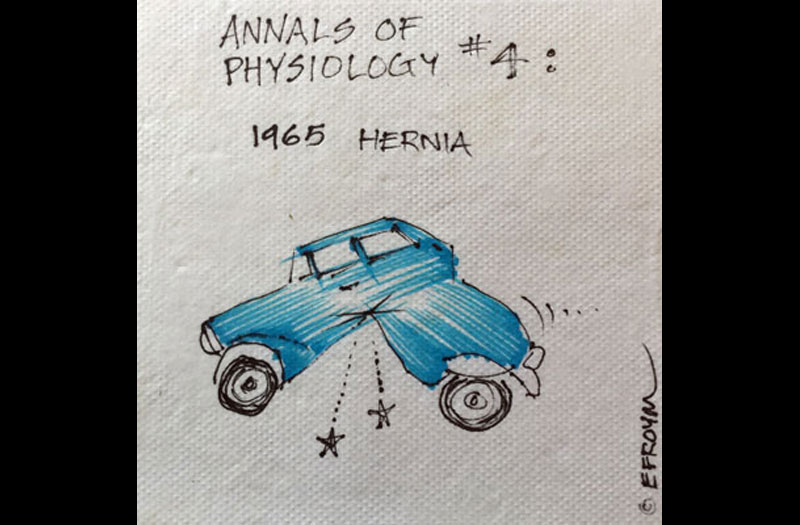“I just want to say, you know, can we all get along? Can we get along? Can we stop making it horrible for the older people and the kids?”
Rodney King, 1992
I first met Hanley Norins in 1977 when I was rebuilding the Sea Gull Restaurant after the fire that destroyed it. Hanley was an advertising executive with Young & Rubicam and was responsible for several memorable jingles such as “Brylcreem, a little dab’ll do ya.” I was introduced to Hanley by my architect, David Clayton. Sadly both have passed away since then.
Let’s admit it, democracy as we once knew it in America, is broken. Given the disfunction of the U.S. Government, which (let’s be honest) is a reflection of the division of the American people, I have been thinking of a technique that Hanley taught me. The technique is designed to bring people together to make better decisions. The technique can apply to individuals, families, groups and perhaps even our government.
Consider these two questions.
Do we want democracy to work or not?
Are we willing to negotiate and compromise to make it work?
If we can’t answer yes to these two questions and really mean it, then not only is democracy broken but it is not at all clear that it can be repaired.
Hanley Norins was of the opinion that there is only one distinctive trait in a highly creative person-the ability to associate. Given a particular problem, this individual can immediately begin to associate “hundreds and thousands and millions of symbols that may lead to an ideal solution.”
Incentives today work against democracy and compromise. Politicians are at the mercy of voters many of whom are angry, selfish, complacent or uninformed. That’s on us, not on our politicians or some abstract idea of ‘government.’
Social media, 24 hour news streaming, money, purity tests—these are all part of the angry and chaotic environment we see today.
So, what is the technique I learned from Hanley Norins? This long quote from Marketing For Dummies by Craig Smith and Alexander Hiam explains the technique in detail.
These ideas aren’t likely to be adopted by the average company, but they do illustrate the spirit of brainstorming, which is to set aside your criticisms and have some fun generating ideas. The rules (which you must tell the group beforehand) are as follows:
Quantity, not quality is what matters. Generate as many ideas as possible.
No member of the group can criticize another member’s suggestion. No idea is too wild to not write down, and you can even go as far as keeping a water gun on hand and squirting the naysayer.
No one person ‘owns’ any of the ideas. Everyone builds off of each other’s ideas.
Don’t let your group just go through the motions of brainstorming. To really get in the spirit of it, they have to free associate – to allow their minds to wander from current ideas to whatever new ideas first pop up, no matter what the association between the old and new idea may be.
Question brainstorming
Question brainstorming is another way to generate novel questions that can provoke your group into thinking more creatively. This technique follows the same rules as brainstorming, but you instruct the group to think of questions rather than ideas.
For example, if you need to develop an exhibition stand that draws more prospects in, the group may think of the following kinds of questions:
Do bigger stands draw in more people than smaller ones?
Which stands drew the most people at the last trade show?
Are all visitors equal or do we want to draw only certain types of visitors?
Will the offer of a resting place and a free coffee do the trick?
After getting these questions from the group, you get the job of answering them and seeing how those answers can help you create a new and successful exhibition booth.
Wishful Thinking
Wishful thinking is a technique suggested by Hanley Norins of the ad agency Young and Rubicam. It follows the basic rules of brainstorming, but with the requirement that all statements start with I wish.
The sort of statements you get from this activity often prove useful for developing advertising or other marketing communications.
If you need to bring some focus to the list to make it more relevant to your marketing, just state a topic for people to make wishes about. For example, you can say “Imaging that the Exhibition Fairy told you that all your wishes can come true as long as they have to do with the company’s stand.”
Analogies
Analogies are a great creativity device. You may not think we’re serious because the idea sounds so trivial. But we define creativity as making unobvious combinations of ideas. A good analogy is just that.
To put analogies to work for you, ask your group to think of things similar to the subject or problem you’re thinking about. For example, you may ask a group to brainstorm analogies for your product as a source of inspiration for creating new advertisements about that product. At first, group members will come up with conventional ideas but they’ll soon run out of these obvious answers and must create fresh analogies to continue.
So, whether or not it is naive on my part, I humbly propose that we all and especially our leaders, consider Hanley’s techniques as we move forward with our complicated unique democracy. Maybe, just maybe, it will help.
As President Lyndon Johnson liked to say quoting from Isaiah 1:18 “Come, let us reason together.”

